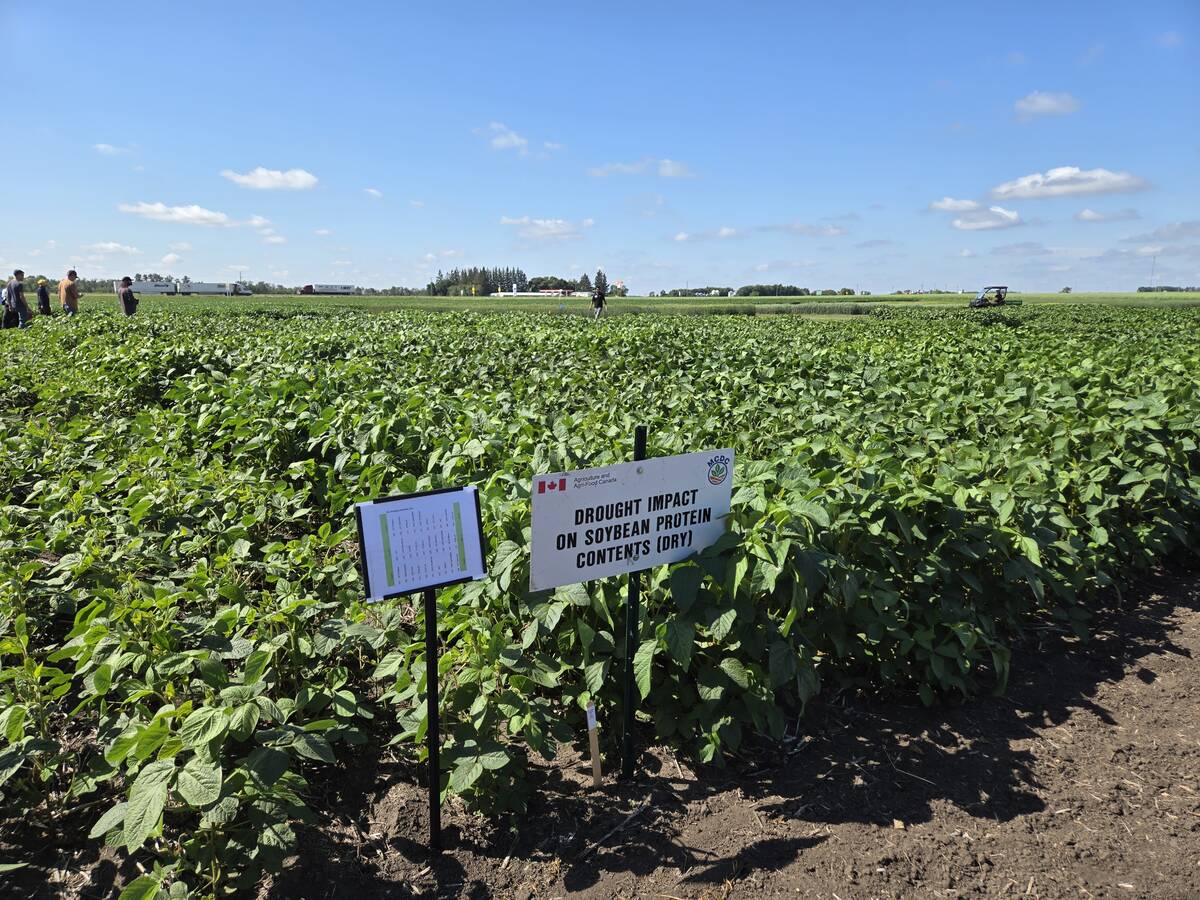Illinios-based agricultural columnist Alan Guebert gives the American perspective on potash dealings.
American farmers hardly noticed when, in mid-August, news broke that Australian-based BHP Billiton was willing to pay nearly $40 billion for the world’s largest fertilizer producer, Potash Corp. of Saskatchewan.
The disinterest was honest. After all, who was BHP Billiton and what did it want with a Canadian fertilizer firm in the steady, if not dull, potash business?
What BHP is is big; really, really big. On Aug. 17, its market capitalization – the value of all its publicly held shares – was $178 billion.
Read Also

Carberry field day looks for agriculture solutions
Manitoba farmers explored research solutions for resilient crops, perpetual agronomic issues and new kinds of agricultural products at a field day at the Manitoba Crop Diversification Centre in Carberry on Aug. 6.
By comparison, the market cap of American agricultural giant Archer Daniels Midland is $19 billion, Deere &Co.’s is $26.5 billion and seed meister Monsanto is $30 billion.
Stack these three pillars of the agriculture business on top of each other and they’re barely belt-high next to BHP, usually described as an “Anglo-Australian” mining giant with huge global interests in copper, coal, nickel and aluminum.
That means the $40 billion BHP wants to drop on Potash Corp. could buy either Monsanto or Deere or two ADMs. And yet BHP doesn’t want green iron, vegetable oil or seed technology. It wants fertilizer.
Why?
Simple. BHP is betting that potash will be a key element in the world’s need to feed an extra 57 million mouths every year from now through 2050.
Should its bid succeed, and that’s nowhere certain with other global fertilizer players looking to get into an auction for Potash Corp., best estimates show BHP “would control about 30 percent of the world-wide potash market overnight,” according to the Aug. 18Wall Street Journal.
Should one company own 30 percent of the global potash market, the K in grain production’s awesome threesome, N, P &K?
Before answering, consider what BHP did for the world iron ore market when it recently flexed its muscle there.
According to theJournal,BHP, “(d) espite running only the third-largest seller of iron ore … cajoled its bigger rivals to move to index, spot and quarterly pricing formula.
“That system, argued [BPH], better reflects the current market price of iron ore instead of having to guess what the price will be for a year’s time, as was done under the system that was officially abandoned this year.”
You bet it was abandoned because, in short, under BHP’s guidance, the world’s big ore sellers now can better stick together to better stick it to customers. Cozy.
But cozy is not what BHP has in mind for Potash Corp. or the potash export market. In fact, BHP’s unsolicited bid for Potash Corp. is akin to the Aussie giant crashing the invitation-only export market dominated by government-sanctioned cartels.
But the big potash cartels are not eager to welcome BHP to the bash. The biggest one, Canpotex, links North America’s biggest potash players, Potash Corp., Mosaic and Agrium, in sales outside the continent.
Here, they compete. Over there, they… ah… co-ordinate.
That’s OK, they claim, because they still fight each other in North America, as if the U. S and Canadian markets aren’t part of the global market and potash prices in each nation somehow are separate from global prices. Gee, how’s that work?
Another cartel, composed of Russian giants Uralkali, Silvinit and Belaruskali, are rumoured to be in talks to combine. If they do, today’s potash pie will shrink even more while any slice of it will immediately become sweeter.
And now arrives BHP with its smile and $40 billion. It doesn’t want to crash the party. It wants to become the life of the party.
Where does all this leave you? Where you’ve always been when buying fertilizer: between a rock and hard place.
Only now it’s going to get harder and rockier.














